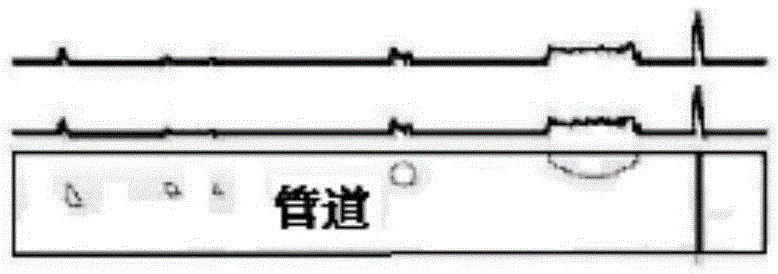Non-excavation detection method and device of buried pipeline body defects
A detection method and buried pipeline technology, applied in the direction of material magnetic variables, etc., can solve the problems of large engineering volume, long time-consuming, high detection cost, etc.
- Summary
- Abstract
- Description
- Claims
- Application Information
AI Technical Summary
Problems solved by technology
Method used
Image
Examples
Embodiment Construction
[0036] The technical solutions of the present invention will be further described below in conjunction with the accompanying drawings and through specific implementation methods.
[0037] Preferred embodiment:
[0038] The preferred embodiment discloses a method for non-excavation detection of pipe body defects in buried pipelines and a device for realizing the method. The non-excavation detection device for pipe body defects of buried pipelines at least includes a casing and five detection elements arranged in the casing for detecting magnetic field vector values, wherein the detection elements are preferably three-axis magnetic sensors.
[0039] In this embodiment, the detection device is actually a typical detection instrument for magnetic gradient tensor, such as image 3 As shown, it specifically includes the No. 0 magnetic sensor located in the center, the No. 1 magnetic sensor and the No. 2 magnetic sensor which are located on both sides of the No. And the No. 3 magne...
PUM
 Login to View More
Login to View More Abstract
Description
Claims
Application Information
 Login to View More
Login to View More - R&D
- Intellectual Property
- Life Sciences
- Materials
- Tech Scout
- Unparalleled Data Quality
- Higher Quality Content
- 60% Fewer Hallucinations
Browse by: Latest US Patents, China's latest patents, Technical Efficacy Thesaurus, Application Domain, Technology Topic, Popular Technical Reports.
© 2025 PatSnap. All rights reserved.Legal|Privacy policy|Modern Slavery Act Transparency Statement|Sitemap|About US| Contact US: help@patsnap.com



